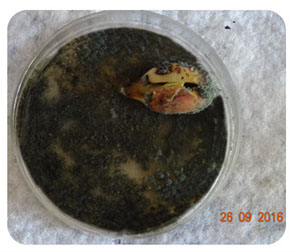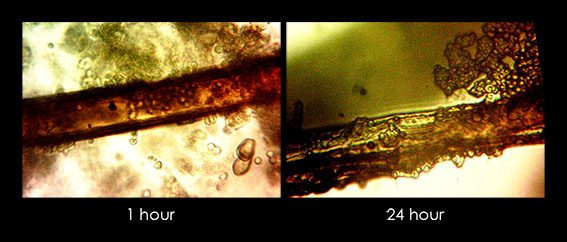GP-A6 Fungicidal
PRODUCT INFORMATION
GP-A6 is a liquid specially formulated and intended:
- To provide plants with essential biomaterial for it to self-activate defence.
- To assist plant self-defence by direct attack of fungal infection.
- To assist plants to self-repair invasive damage.
- In the event of root invasion and symbiont insect activity, to simultaneously enhance root resistant against both invasive pests.
- To help reduce the toxic pesticide build-up and provide a simplified alternative in the integrated Pest Management Program.
ACTIVE INGREDIENTS
A special blend of Essential Oils, Chitosan, Salicylic Acid and Vitamin E.
MIXING INSTRUCTIONS
1. Use 200-pat water to 1 part GP-A6 - 1:200.
2. Put 200 parts water in a tank.
3. Add 1 part water in a tank.
4. Mix the water with the GP-A6.
DIRECTIONS
GP-A6 can be applied through conventional ground equipment, aerial application, or through properly equipped irrigation systems.
Soil Application: 1L per hectare.
Leaf Application: 1L per hectare.
Foliar (leaf) application has been proven to be the most effective method of treatment.
GP-A6 ANTI-FUNGAL
One need only reflects on the devastating affect that potato blight had on Ireland in the 19th century where some 15% of the Irish population died of starvation to realize the severity of this problem. Researchers from the University of Oxford have estimated that currently some 125 million tons of the five food crops - rice, wheat maize, potatoes, and soya beans are damaged annually by fungal infections. The lost yield could have fed some 600 million people, and the loss of rice, wheat and maize alone costs the industry $60 billion per annum. The study group estimated that in 70% of cases where infectious disease causes extinction of a type of animal or plant, an emerging species of fungus is behind the problem, and it appears that this tendency is increasing. Prof. Sarah Gurr concluded that: "Crop losses due to fungal attack challenge food security and threaten biodiversity, yet we are woefully inadequate at controlling their emergence and proliferation..."
However, it no appears that even certified seeds are infected with fungi, as can be seen from the slide. The effect is that these fungi attack and damage new seedling root and consequently seeds do not grow. Farmers experience a germination rate of as low as 50%.

GP-A6 BENEFITS
1. Due to the liposomal base of the formula, it offers rapid penetration through the thick and generally assumed to be impenetrable cell wall and also rapid acceptance thereof by the cell membrane, followed by transference beyond this barrier.
2. The very lipidic nature of the formula overcomes the hydrophobic barrier of the outer surface or the target fungus.
3. Due to the polygenic and multi-cite nature of the formula, the risk of drug resistance is low.
4. This is compounded by the obscuring role played by the ANODS, where the barrier functions are not exposed to the active ingredients, and therefore makes complete elimination of drug resistance possible.
5. Because all ingredients are natural plant derivative, it will qualify as "organic" product.
6. None of the ingredients are toxic and the products are therefore non-toxic and safe.
7. It therefore will also be environmentally safe and will not disrupt the ecology.
8. There will be minimal damage to the "good" and vital microbes in the soil.
9. The varied selection of active ingredients make this formula a "broad spectrum" anti-fungal.
10. The product also serves as anti-fungal, fungicidal as well as fungi static.
11. The formula is varied and can be adapted to serve as inoculant for preventative purposes as well as foliar application.
12. There is no substance that may cause cytotoxicity and consequently foliar damage will be eliminated.

The retention of ANODS in the cell wall and cell membrane can be clearly seen from a photo taken of the above fungus after 24 hours.
IN VITRO STUDIES
Our initial tests of the formula on a variety of fungi were highly encouraging and we share these results below. However, it stands to reason that extensive in vitro studies will now be necessary to confirm the behaviour of the above formula on as wide a scope of fungal families as possible.
EXPERIMENT 1
As we are not equipped to identify the various fungal families, it is not possible to name the particular strain used.
